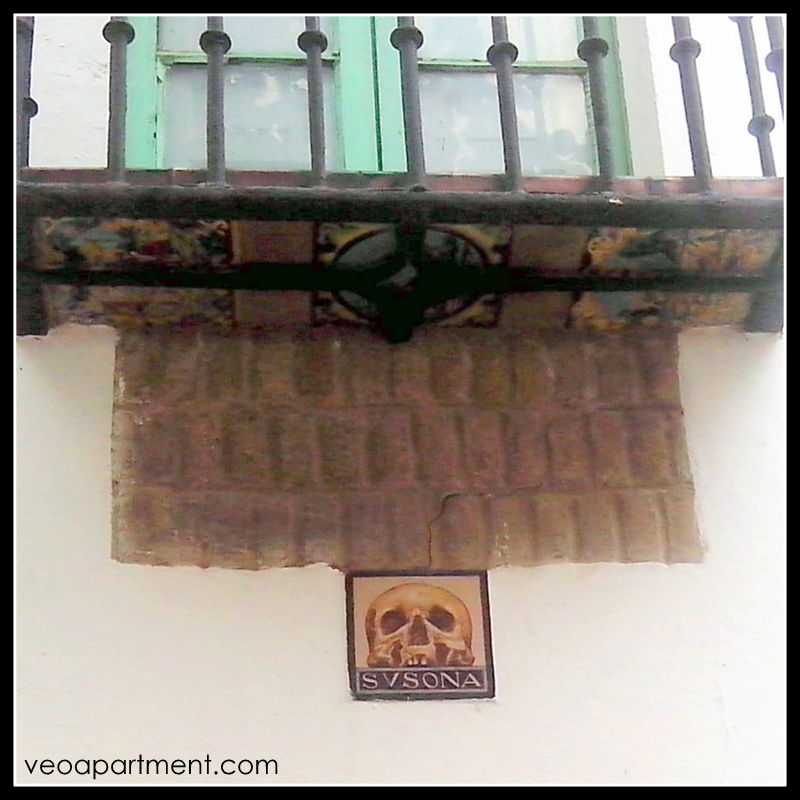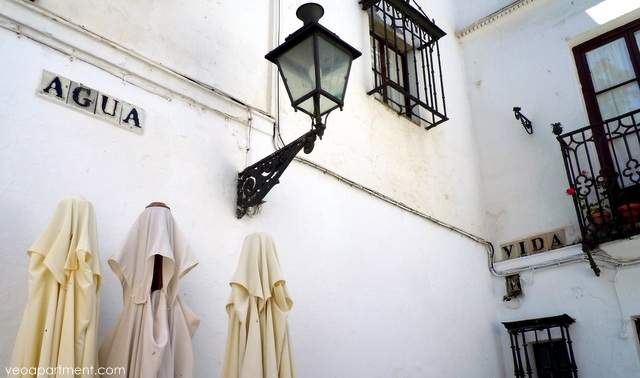 Corner of Agua & Vida (Water & Life)
Corner of Agua & Vida (Water & Life)
The Barrio (neighbourhood) of Santa Cruz is perhaps the best known and most iconic in the historic centre of Seville, with its patchwork of small squares and picturesque narrow streets that help to keep the heat of the summer at bay. It’s also the oldest inhabited part of the city, dating back to the time of the Romans and even beyond. Although it was only for some 250 years of its more than two thousand year history, part of its romance certainly comes from the fact that this was the old Jewish quarter of the city in the late mediaeval period of the Christian Reconquista.
No one really knows when the Jews first came to Seville, or Spain (known to them as the Sepharad) generally. The first definitive written record is from the Vizigoths at the beginning of the 6th century, but they seem by then to have already been a substantial and well-settled community, numerous enough to be considered a problem by the Vizigothic kings, especially after the conversion of the Vizigothic royal family to Catholicism in 587. They had probably first settled in number in the diaspora that followed the destruction of the Temple in Jerusalem by the Emperor Titus in 70 AD, but some believe that they were here much earlier, equating Tarshish of the Old Testament with the realm of Tartessos in southwestern Spain.
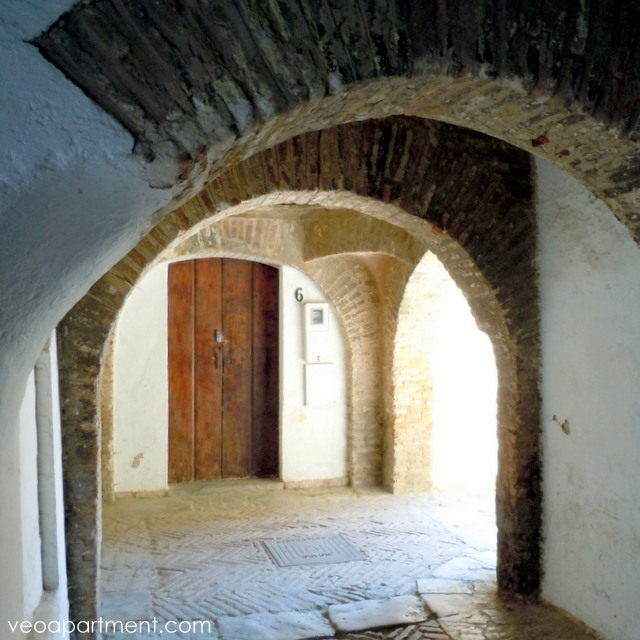 Casa number 6
Casa number 6
The Golden Age of the Jews in Spain was under the Caliphate of Córdoba in the 10th century, a period of unusual religious tolerance, when Jews came to the cities of southern Spain from all over Europe and the Mediterranean and mingled with Arab scholars and Christians to create a unique culture. It was all too brief. After the end of the Caliphate a renewed influx of fundamentalist Moslems led to renewed persecutions. Many Jews fled to the Christian realms to the north, where, despite mistrust and sometimes hostility, they were generally welcomed as valuable allies against the Moors, and in 1248, when Ferdinand III captured Seville, it was the Jews who presented him with the keys of the city.
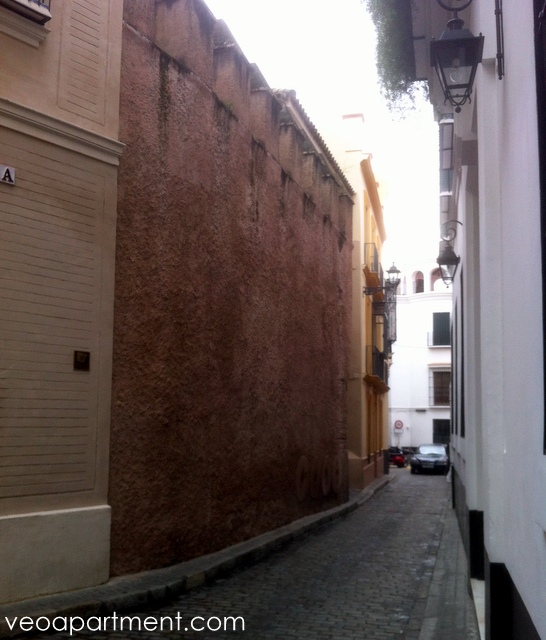 Wall of the Jewish Quarter
Wall of the Jewish Quarter
It is this event that marks the beginning of the Jewish quarter as it’s remembered today. Although the Jews were confined to the Jewish quarter, which was separated from the rest of the city by its own wall, a short section of which can still be seen in Calle Fabiola, and had to wear a yellow badge to identify them, they enjoyed a century or more of prosperity until the civil war in the time of Peter I. Increasing hostility on the part of the Church, and the anti-Semitism of Peter’s rival Henry, culminated in Seville in the great pogrom of 1391, when a mob broke into the Juderia and murdered some 4,000 Jews. In the aftermath many more fled, and others submitted to baptism and became conversos. Two of the three main synagogues became churches, including the Santa Cruz church (now the Plaza Santa Cruz). Although (or perhaps because) many of the conversos were wealthy, and also suspected of keeping to the old religion in secret, they remained targets of hostility. Finally, in 1478, the Catholic Monarchs Ferdinand and Isabella established the Spanish Inquisition, which claimed its first casualties in 1481, before expelling all unconverted Jews from Andalucia in 1483. The Jewish quarter was no more.
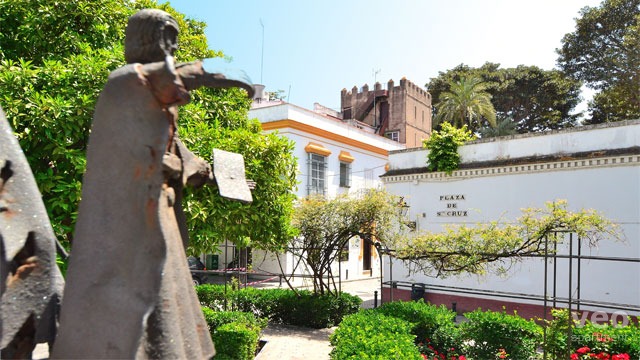 Plaza Santa Cruz
Plaza Santa Cruz
Much of the area underwent a decline in the following period, but with programs of urban renewal in the 18th century, in the Napoleonic period, and particularly in the preparations for the 1929 Spanish-American exhibition, it gained a new lease of life as a tourist attraction. Today it sees tens of thousands of visitors a year, who come to enjoy its colour and its history. Its little squares, such as the Plaza Elvira, Los Refinadores and the Santa Cruz are indeed among the most beautiful in the city, and the narrow streets with their tiles and balconies work their magic on even the most blasé. Plenty of places to sit outside a bar and watch the world go by too, and some of those little secret places like the Plaza Escuela de Cristo or Santa Marta which you might miss if you don’t know how to find them. The shades of Don Juan and Doña Iñes de Ulloa still walk these streets, brushing shoulders with Carmen the tobacco girl and Cervantes, and many another.
To experience it best rent one of our Santa Cruz apartments, and spend a few days living in one of Europe’s most atmospheric neighbourhoods.
